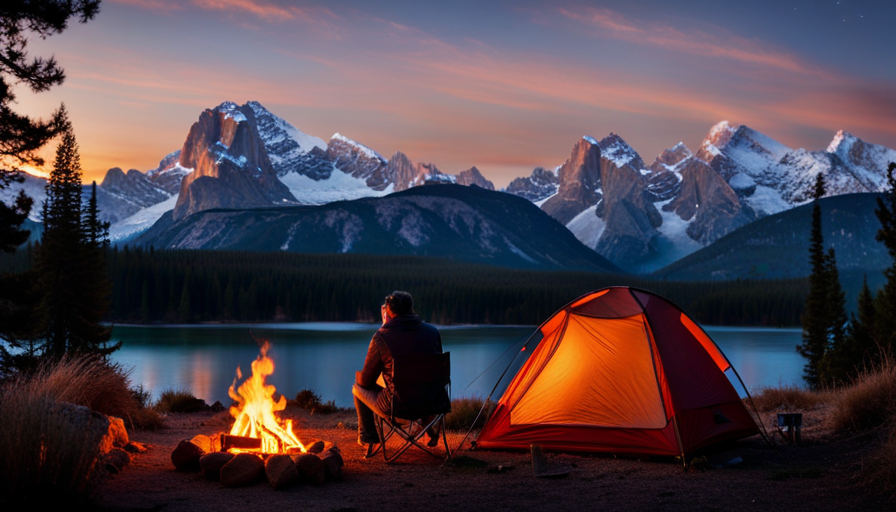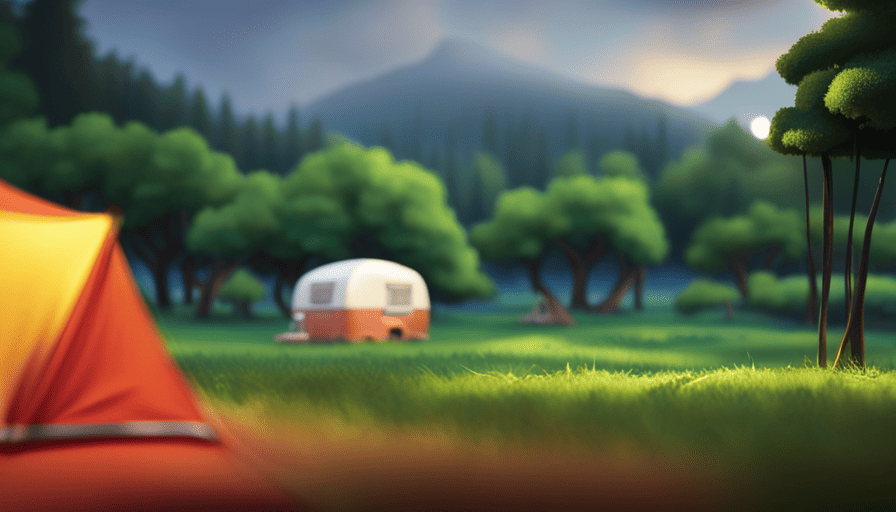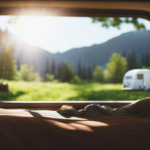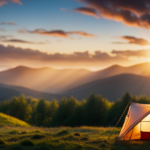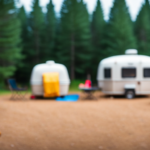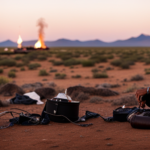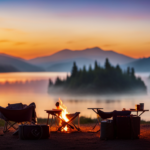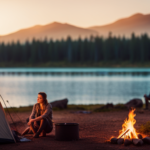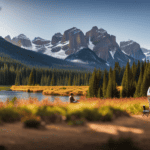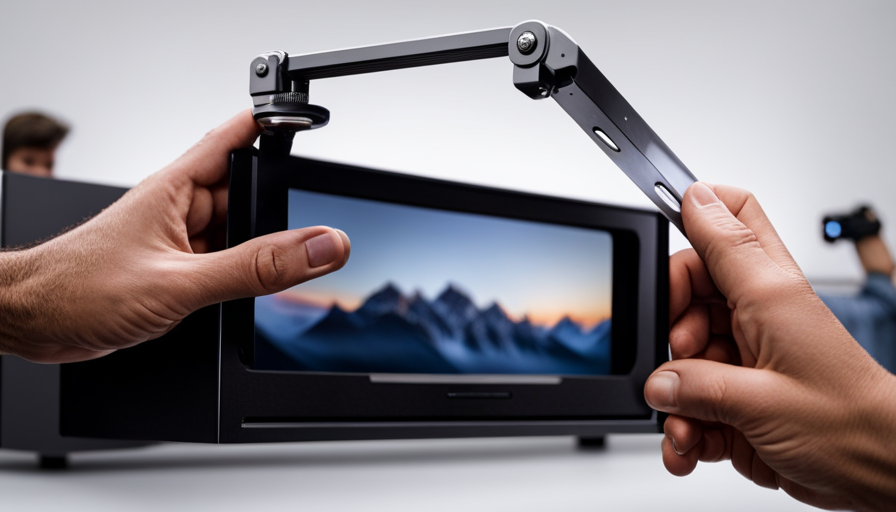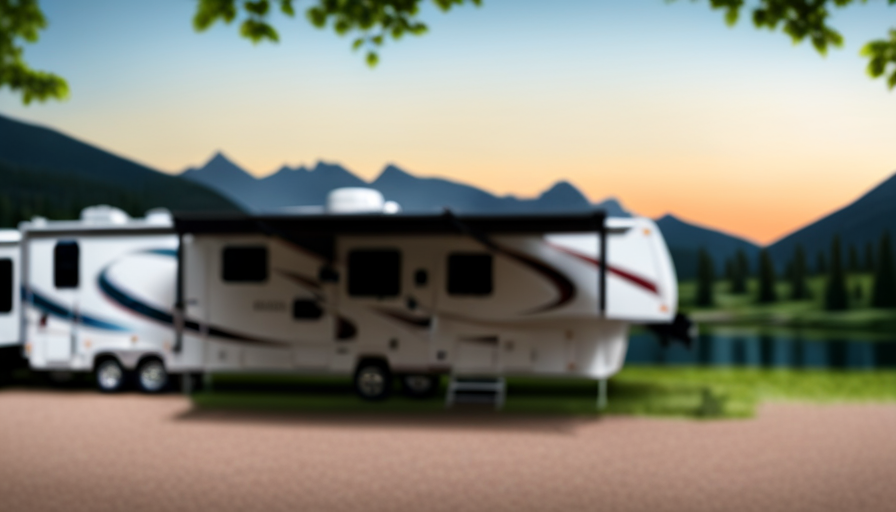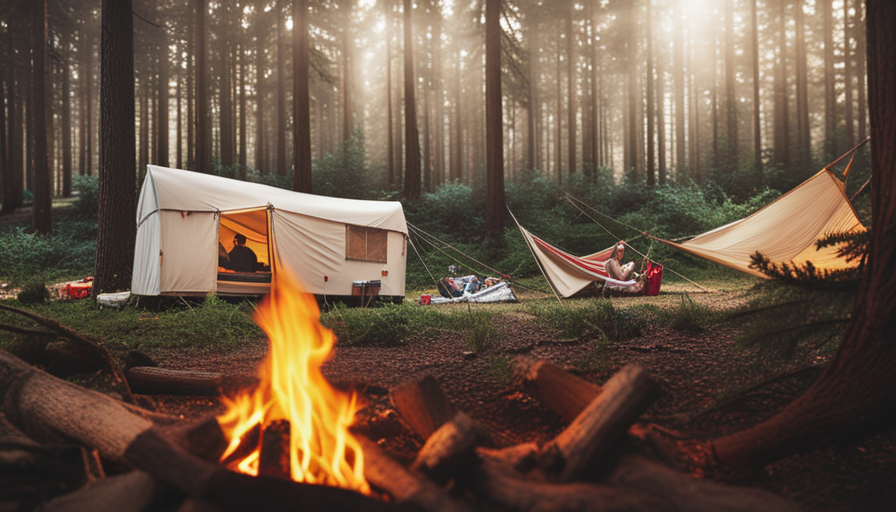Living in a camper all year offers a unique and exciting way to embrace a nomadic lifestyle. It allows the freedom to explore new places, connect with nature, and experience unmatched independence. However, it requires careful planning, organization, and adaptability. Embrace the freedom and adventure that comes with camper living!
In this article, I will guide you through the essential steps and considerations to successfully live in a camper year round. From choosing the right camper and essential equipment to finding the perfect campsite and managing your finances, I will share my personal experiences and practical tips to help you make the most of this unconventional lifestyle.
I will also discuss how to maintain your camper, establish a daily routine, and overcome challenges that may arise along the way. By connecting with the camper community and embracing the freedom and adventure, you will discover a whole new way of living that is both fulfilling and exciting.
So, let’s dive in and embark on this extraordinary journey together!
Key Takeaways
- Choosing the right camper is crucial for comfortable living and maneuverability.
- Organization in limited space is essential, invest in storage containers and organizers.
- Safety precautions should be researched and implemented.
- Connecting with the camper community provides companionship, support, and inspiration.
Choosing the Right Camper
If you’re ready to hit the road full-time, it’s crucial to choose the right camper for your year-round adventures.
Choosing the right size is key when it comes to living in a camper year round. You want a camper that is spacious enough to comfortably live in, but not so large that it becomes difficult to maneuver and find parking spots. Consider your personal needs and preferences when it comes to space. Are you someone who doesn’t mind being in close quarters, or do you prefer a bit more room to stretch out?
Budget-friendly options are also important to consider. Living in a camper year round can be a cost-effective way to travel and explore, so finding a camper that fits within your budget is essential. There are many affordable options available, from used campers to smaller, more economical models.
Now that you’ve chosen the right camper, it’s time to think about the essential equipment and supplies you’ll need for your year-round adventure.
Essential Equipment and Supplies
Packing the necessary gear and stocking up on provisions is like preparing for a nomadic adventure, ensuring that I have all the tools and supplies needed for a fulfilling life on the road. Budgeting plays a crucial role in this process, as it helps me determine how much I can spend on equipment and supplies. By setting a budget, I can prioritize the essentials and avoid overspending.
Organization is key when living in a camper year-round. Limited space requires careful planning to make the most of every inch. I invest in storage containers and organizers to keep everything tidy and easily accessible. This not only saves space but also allows me to find what I need quickly.
When it comes to equipment, there are a few essentials that I always have on hand. A reliable camping stove and cooking utensils are a must for preparing meals on the go. I also pack a portable water filter to ensure a safe and clean water supply wherever I am. Additionally, having a good quality sleeping bag and comfortable bedding is essential for a restful night’s sleep.
As I prepare to find the perfect campsite, I ensure that I have all the necessary equipment and supplies to make my stay comfortable and enjoyable. From budgeting wisely to staying organized, these steps lay the foundation for a successful and fulfilling life on the road.
Finding the Perfect Campsite
When searching for the ideal campsite, it’s essential to consider factors like location, amenities, and natural beauty.
Finding remote locations is a key aspect of living in a camper year round. Personally, I love the solitude and serenity that comes with being away from crowded campsites. I look for spots that are off the beaten path, far from the noise and distractions of civilization.
Safety precautions are also important when choosing a campsite. I make sure to research the area beforehand, checking for any potential dangers like wildlife or hazardous weather conditions. It’s crucial to be prepared and have the necessary equipment to handle any situation that may arise.
Once I find a suitable campsite, I take the time to appreciate the natural beauty surrounding me. Whether it’s a breathtaking mountain view or a tranquil lake, being immersed in nature is one of the greatest joys of living in a camper.
As I move on to the next topic of managing my finances, I find that being in nature helps me save money and live a simpler, more fulfilling life.
Managing Your Finances
Managing your finances while living in a camper can be a challenge, but did you know that according to a recent study, 65% of full-time campers report spending less money on housing expenses compared to traditional homeowners?
Budgeting becomes crucial when you choose to live in a camper year-round. One of the first steps is to create a comprehensive budget that includes all your expenses, such as fuel, campground fees, and maintenance costs. By tracking your spending and setting limits, you can ensure that you stay within your means and avoid unnecessary financial stress.
To make the most of your budget, it’s essential to implement saving strategies. Consider cooking your meals instead of eating out to save on food costs. Look for free or low-cost activities in the areas you visit, such as hiking or visiting local attractions. Additionally, you can save on electricity by using solar panels or investing in energy-efficient appliances. These small changes can add up over time and help you stay on track financially.
As you learn to manage your finances effectively, you can transition smoothly into the subsequent section about maintaining your camper. Taking care of your home on wheels is essential to ensure its longevity and avoid costly repairs.
Maintaining Your Camper
To keep your mobile home in top shape, it’s crucial to establish a regular maintenance routine for your camper. This not only ensures that everything is in working order but also helps prevent costly repairs down the line. One important aspect of camper maintenance is taking care of your appliances. Regularly cleaning and inspecting them will help prevent any malfunctions or breakdowns. I recommend referring to the manufacturer’s instructions for specific maintenance requirements for each appliance. Additionally, it’s essential to be proactive in preventing mold and mildew in your camper. This can be achieved by keeping the interior well-ventilated and using dehumidifiers or moisture absorbers. Regularly checking for any signs of water leaks and promptly addressing them is also crucial.
To assist you in keeping track of your maintenance tasks, here’s a helpful table:
| Appliance | Maintenance Tips |
|---|---|
| Refrigerator | Clean coils annually, defrost regularly, and check for proper temperature. |
| Air Conditioner | Clean filters monthly and have it serviced annually by a professional. |
| Water Heater | Flush tank annually and inspect for any leaks. |
| Stove/Oven | Clean burners and oven regularly, and check for gas leaks. |
By following these maintenance tips, you can ensure that your camper stays in good condition and provides you with a comfortable living space. Now, let’s discuss how to stay connected on the road.
Staying Connected on the Road
Staying connected on the road is crucial for maintaining a sense of connection and security while exploring the great outdoors. As someone who’s lived in a camper year-round, I understand the importance of finding reliable Wi-Fi wherever you go.
Here are four tips to help you stay connected on the road:
-
Research Wi-Fi options: Before hitting the road, research different Wi-Fi options available in the areas you plan to visit. Look for campgrounds or RV parks that offer free Wi-Fi, or consider investing in a portable Wi-Fi hotspot for reliable internet access wherever you go.
-
Utilize public Wi-Fi: Many cafes, libraries, and even some rest stops offer free Wi-Fi. Take advantage of these public networks to download important documents, check emails, or video chat with loved ones.
-
Consider a cell phone plan with hotspot capabilities: Some cell phone providers offer plans that allow you to use your phone as a hotspot. This can be a convenient option for staying connected in remote areas where Wi-Fi might be scarce.
-
Use Wi-Fi finding apps: There are several apps available that can help you locate nearby Wi-Fi hotspots. These apps often provide user reviews and ratings, making it easier to find reliable Wi-Fi sources on the road.
Finding reliable Wi-Fi is just one aspect of staying connected on the road. Establishing a daily routine can also help you stay organized and make the most of your time on the road.
Establishing a Daily Routine
Start your day off right by establishing a daily routine that keeps you organized and fully immersed in the joy of life on the road. When living in a camper year round, it’s important to have a morning routine that helps you start your day on the right foot.
Begin by setting a consistent wake-up time and stick to it. This will help regulate your sleep schedule and ensure you get a good start to your day. After waking up, take a few moments to enjoy the peace and quiet of your surroundings before diving into your routine.
Next, it’s important to create a work-life balance. If you work remotely while living in a camper, it’s crucial to establish a schedule that allows you to be productive while still enjoying the freedom of life on the road. Set designated work hours and create a dedicated workspace in your camper. This will help you stay focused and separate work from leisure activities.
By establishing a morning routine and creating a work-life balance, you can make the most of your life on the road. However, challenges are bound to arise while living in a camper year round. From dealing with limited storage space to adjusting to different climates, the next section will provide valuable tips and strategies to overcome these obstacles.
Dealing with Challenges
Overcoming challenges can be difficult while living on the road, but did you know that 70% of full-time travelers find creative solutions to limited storage space? When you live in a camper year round, there are certain challenges you may encounter, such as loneliness and extreme weather. However, with some practical tips and a positive mindset, you can navigate through these challenges.
Loneliness is a common issue for those living in a camper year round. Being away from family and friends can sometimes make you feel isolated. To overcome this, it’s important to connect with the camper community. Attend local meetups or join online forums to meet like-minded individuals who share your lifestyle. Building relationships with fellow travelers can provide a sense of companionship and support.
Dealing with extreme weather is another challenge you may face while living in a camper. Whether it’s scorching heat or freezing temperatures, it’s important to be prepared. Invest in proper insulation and ventilation to regulate the temperature inside your camper. Plan your travels according to the weather forecast, avoiding areas with extreme conditions. Additionally, make sure to pack appropriate clothing and gear to stay comfortable in any weather.
Transitioning into the subsequent section about ‘connecting with the camper community,’ it’s crucial to build a strong support system and find camaraderie on the road.
Connecting with the Camper Community
When it comes to living in a camper year round, one of the best ways to connect with the camper community is by joining online forums and groups. These online platforms provide a space where you can ask questions, share tips, and learn from others who are also living the camper life.
Additionally, attending camper meetups and gatherings is a great way to meet like-minded individuals and form friendships with fellow campers.
Lastly, don’t be afraid to share your own tips and experiences with the community. By sharing your knowledge, you can help others navigate the challenges and make the most out of their camper lifestyle.
Joining Online Forums and Groups
Engage with like-minded individuals by joining online forums and groups to enhance your camper living experience. Online resources and support networks can provide valuable information, advice, and a sense of community for those living in campers year-round. Here are four ways in which joining these online communities can benefit you:
-
Access to a wealth of knowledge: Online forums and groups are filled with experienced campers who can provide tips and tricks on everything from camper maintenance to finding the best campsites.
-
Peer support: Connect with others who share your lifestyle and can offer encouragement and understanding during both the joys and challenges of camper living.
-
Inspiration and ideas: Discover new destinations, creative storage solutions, and innovative camper modifications from fellow campers who love to share their experiences.
-
Opportunities for meetups: Through online forums and groups, you can find out about camper meetups and gatherings in your area, allowing you to connect with like-minded individuals face-to-face.
By joining online forums and groups, you can lay the foundation for attending camper meetups and gatherings, where you can forge even deeper connections with the camper community.
Attending Camper Meetups and Gatherings
To fully immerse yourself in the camper community, attending meetups and gatherings is an exciting opportunity to connect with like-minded individuals and create lasting friendships that can make your nomadic lifestyle all the more fulfilling. For instance, imagine attending a camper meetup in the picturesque mountains, where you bond with fellow adventurers over campfire stories and breathtaking hikes, leaving you with memories to cherish for a lifetime.
| Camper Safety | Navigating Camper Friendly Roads |
|---|---|
| Check gas and fire alarms | Research low clearance bridges |
| Secure loose items | Avoid narrow or steep roads |
| Practice fire safety | Use GPS specifically for RVs |
| Carry a first aid kit | Plan your route in advance |
Attending these meetups not only allows you to socialize but also provides valuable information on camper safety and navigating camper-friendly roads. Sharing tips and experiences with other campers will further enhance your knowledge and help you make the most of your nomadic lifestyle.
Sharing Tips and Experiences
Participating in camper meetups and gatherings presents an opportunity to share tips and experiences, enriching your knowledge and enhancing your nomadic lifestyle. It’s amazing how much you can learn from fellow campers who’ve been on the road for years.
Here are some tips for solo campers that I’ve picked up along the way:
- Always have a backup plan for emergencies.
- Invest in a good quality portable solar panel for off-grid camping.
- Utilize free camping options like BLM land or national forests to save money.
- Make the most of your space by using storage bins and organizers.
Attending these gatherings also opens up the chance to discover budget-friendly camping hacks that can make life on the road even more comfortable. Embracing the freedom and adventure of living in a camper year-round doesn’t have to be complicated.
Embracing the Freedom and Adventure
Explore the boundless freedom and endless adventure that comes with living in a camper year round. Embracing a freedom mindset is key to truly experiencing the joys of this lifestyle.
Living in a camper allows you to break free from the constraints of a traditional home and embrace a more nomadic lifestyle. You have the freedom to go wherever your heart desires, with no strings attached. Whether it’s waking up to the sound of crashing waves on a secluded beach or watching a breathtaking sunset over the mountains, the possibilities are endless.
Solo travel is another aspect of camper living that adds an extra layer of adventure. There’s something incredibly empowering about hitting the open road and exploring new places on your own terms. You have the freedom to change your plans at a moment’s notice and follow your own intuition. Solo travel allows you to fully immerse yourself in the new environments you encounter, and you’ll often find yourself meeting new people and making unexpected connections along the way.
Living in a camper year round requires a practical approach as well. It’s important to have a well-equipped camper that meets your needs and allows for comfortable living. From solar panels for electricity to compact and efficient storage solutions, there are many practical considerations to keep in mind. Planning and organization are key to making the most of the space you have and ensuring a smooth and enjoyable experience.
So, if you’re ready to embrace a freedom mindset and embark on a solo travel adventure, living in a camper year round might just be the perfect lifestyle for you. Explore the world, meet new people, and create unforgettable memories as you navigate the open road with the ultimate freedom and adventure at your fingertips.
Frequently Asked Questions
Can I legally live in a camper year-round?
Yes, it’s possible to legally live in a camper year-round. For example, my friend Sarah has been living in her camper full-time for the past two years.
There are various housing options available for full-time campers, such as RV parks, campgrounds, and even designated areas on private property.
Living in a camper year-round has its benefits, including the ability to travel and explore new places. However, it also comes with challenges like limited space and the need for regular maintenance.
How do I handle mail and packages while living in a camper?
Handling mail and packages on the road can be challenging, but I’ve found a reliable mail forwarding service that makes it easier. They provide me with a permanent mailing address, and whenever I receive mail or packages, they forward them to wherever I am. It’s convenient and ensures that I never miss any important documents or deliveries.
Finding a trustworthy mail forwarding service is essential for anyone living in a camper full-time.
What are some tips for staying safe while living in a camper?
When it comes to staying safe while living in a camper, an old adage comes to mind: ‘Better safe than sorry.’
Here are some tips for camper security:
- Invest in good quality locks for your doors and windows.
- Install motion sensor lights around your camper.
- Consider getting a security system.
Additionally, essential safety equipment for living in a camper includes a fire extinguisher, a carbon monoxide detector, and a first aid kit.
Always prioritize your safety and take necessary precautions.
How do I handle medical emergencies while living in a camper?
Handling medical emergencies while living in a camper can be challenging, but with proper preparation, it’s manageable. It’s essential to have a well-stocked first aid kit that includes basic medical supplies. Additionally, knowing the location of nearby medical facilities and having a reliable means of transportation is crucial in case of emergencies. It’s also advisable to have a comprehensive health insurance plan that covers healthcare access while living on the road.
Are there any specific rules or regulations I should be aware of when living in a camper year-round?
When it comes to camper living, it’s important to be aware of the legal requirements that may apply.
One interesting statistic to consider is that according to a study conducted by the RV Industry Association, there are over one million Americans who choose to live in RVs full-time.
To ensure compliance, it’s crucial to research and understand local zoning laws, campground regulations, and any permits that may be necessary.
It’s always better to be informed and prepared to avoid any legal issues while living in a camper year-round.
Conclusion
So there you have it, my fellow adventurers! Living in a camper year-round may seem daunting at first, but with the right attitude and a little bit of know-how, it can be the ultimate freedom and adventure.
From choosing the perfect camper to finding your dream campsite, managing your finances to maintaining your home on wheels, we’ve covered it all.
And don’t forget to connect with the amazing camper community out there, because sharing stories and tips is what it’s all about.
So pack your bags, embrace the nomadic lifestyle, and let the open road be your guide. Happy camping, my friends!

